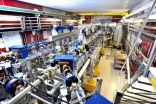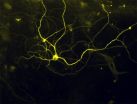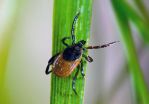Scientists identify bone cells that could help children who need corrective facial surgery
2014-11-24
(Press-News.org) ANN ARBOR--Our bones are smart. Bones know that by adolescence it's time to stop growing longer and stronger, and from that point on bones keep their shape by healing injuries.
This question of why bones grow longer and stronger in children, but stay static in adults--yet retain the ability to heal themselves, has long perplexed scientists in the bone regeneration field. But researchers from the University of Michigan, Kyoto University and Harvard University believe they may have unearthed a big piece of this puzzle.
The team discovered that a certain subset of cartilage-making cells, known as chondrocytes, replicate themselves, make other bone cells and drive bone growth--findings that could lead to new treatments for children with facial deformities who normally have to wait until adulthood for corrective surgery.
The study by Dr. Noriaki Ono, U-M assistant professor of dentistry, and colleagues will appear online Nov. 24 in Nature Cell Biology.
It's long been thought that these chondrocytes die when children reached adolescence and their bones stopped growing, Ono said. However, the fact that bone still heals itself even without chondrocytes caused intense debate among researchers.
Ono's group found that some chondrocytes don't die, but rather transform themselves into other types of bone-growing and bone-healing cells.
"Up until now, the cells that drive this bone growth have not been understood very well. As an orthodontist myself, I have special interest in this aspect, especially for finding a cure for severe bone deformities of the face in children," he said. "If we can find a way to make bones that continue to grow along with the child, maybe we would be able to put these pieces of growing bones back into children and make their faces look much better than they do."
Ono said one of the challenges in the bone and cartilage field is that stem cells haven't really been identified. The only widely accepted idea is that certain stem cells help bones grow and heal, but that's only discussed in the context of adults with bone disorders such as osteoporosis.
Many factors cause craniofacial deformities, and all are devastating to children, he said. In children with Goldenhar syndrome, underdeveloped facial tissues can harm the developing jawbone. Another bone deformity called deformational plagiocephaly causes a child's head to grow asymmetrically.
INFORMATION:
The study is titled "A Subset of Chondrogenic Cells Provides Early Mesenchymal Progenitors in Growing Bones." Co-authors also include: Wanida Ono of the U-M School of Dentistry; Takashi Nagasawa of Kyoto University in Japan; and Henry Kronenberg, of Harvard Medical School and Massachusetts General Hospital.
Study
Noriaki Ono
U-M School of Dentistry
ELSE PRESS RELEASES FROM THIS DATE:
2014-11-24
VIDEO:
When zebrafish are infected with bright blue Mycobacterium marinum, bright red immune cells quickly surround the bacteria to form tightly organized nuggets called granulomas (vessels green, bacteria blue, immune cells...
Click here for more information.
DURHAM, N.C. -- The body responds to tuberculosis infection by locking the bacterial offenders into tiny clusters of immune cells called granulomas, which are a hallmark of the disease. This containment strategy succeeds ...
2014-11-24
The structure of pores found in cell nuclei has been uncovered by a UCL-led team of scientists, revealing how they selectively block certain molecules from entering, protecting genetic material and normal cell functions. The discovery could lead to the development of new drugs against viruses that target the cell nucleus and new ways of delivering gene therapies, say the scientists behind the study.
At the heart of every cell in our body is a cell nucleus, a dense structure that contains our DNA. For a cell to function normally, it needs to surround its nucleus with a ...
2014-11-24
The first detailed, high-resolution 3-D maps of Antarctic sea ice have been developed using an underwater robot. Scientists from the UK, USA and Australia say the new technology provides accurate ice thickness measurements from areas that were previously too difficult to access.
The results, published this week in the journal Nature Geoscience (Monday 24 November 2014), step up the pace of research in the polar regions aimed at understanding the dramatic sea ice changes in the context of climate change.
Scientists use a range of technologies and techniques to measure ...
2014-11-24
Scientists have discovered a gene that protects people against one of the major causes of stroke in young and middle-aged adults and could hold the key to new treatments.
Researchers from Royal Holloway, University of London, together with an international team from across the United States and Europe, have found that people with a specific variant of a gene, known as PHACTR1, are at reduced risk of suffering cervical artery dissection, which is caused by a tear in an artery that leads to the brain.
The new discovery, published in the journal Nature Genetics, could ...
2014-11-24
Scientists at the Helmholtz-Zentrum Dresden-Rossendorf (HZDR) have studied the dynamics of electrons from the "wonder material" graphene in a magnetic field for the first time. This led to the discovery of a seemingly paradoxical phenomenon in the material. Its understanding could make a new type of laser possible in the future. Together with researchers from Berlin, France, the Czech Republic and the United States, the scientists precisely described their observations in a model and have now published their findings in the scientific journal Nature Physics.
Graphene ...
2014-11-24
Boston, MA - Researchers at Harvard School of Public Health (HSPH) have found a novel mechanism causing type 2 diabetes that could be targeted to prevent or treat the disease. The research highlights a previously unrecognized molecular pathway that contributes to the malfunction of liver cells in obesity, leading to insulin resistance and diabetes.
The study appears online November 24, 2014 in Nature Medicine.
"While it is well-established that obesity generates cellular and molecular stress leading to abnormal functioning of many cellular processes, the mechanisms ...
2014-11-24
CAMBRIDGE, MA -- Researchers have made great progress in recent years in the design and creation of biological circuits -- systems that, like electronic circuits, can take a number of different inputs and deliver a particular kind of output. But while individual components of such biological circuits can have precise and predictable responses, those outcomes become less predictable as more such elements are combined.
A team of researchers at MIT has now come up with a way of greatly reducing that unpredictability, introducing a device that could ultimately allow such ...
2014-11-24
After more than six years of intensive effort, and repeated failures that made the quest at times seem futile, Harvard Stem Cell Institute (HSCI) researchers at Boston Children's Hospital (BCH) and Harvard's Department of Stem Cell and Regenerative Biology (HSCRB) have successfully converted mouse and human skin cells into pain sensing neurons that respond to a number of stimuli that cause acute and inflammatory pain.
This "disease in a dish" model of pain reception may advance the understanding of different types of pain, identify why individuals differ in their pain ...
2014-11-24
Cloaking immune cells with antibodies that block T cell trafficking to the gut can substantially reduce the risk of viral transmission in a non-human primate model of HIV infection, scientists report.
The findings suggest that drugs that are already in clinical trials for inflammatory bowel diseases might be effective in the treatment or prevention of HIV infection.
The results are scheduled for publication in Nature Medicine.
"We were surprised by the effects that we observed," says senior author Aftab Ansari, PhD, professor of pathology and laboratory ...
2014-11-24
It's a dog eat dog world, and bacteria have been living in it for a long time. It's of no surprise that bacteria have a sophisticated arsenal to compete with each other for valuable resources in the environment. In 2010, work led by University of Washington Department of Microbiology Associate Professor Joseph Mougous uncovered a weaponry system used in this warfare between bacteria. The combatants inject deadly toxins into rival cells.
Now, in a surprising twist, Mougous and colleagues have found that many animals have taken a page from the bacterial playbook. They steal ...
LAST 30 PRESS RELEASES:
[Press-News.org] Scientists identify bone cells that could help children who need corrective facial surgery





